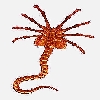The Drinking Bird Mystery: I report- You Decide
Alien: Covenant Forum Topic

dk
MemberTrilobiteJan 12, 20189899 Views12 RepliesI set up a drinking bird and after thinking someone was messing around, I conducted an excruciating 24 hour study. The drinking bird rotates in a counter clockwise manner (in my area of the world). There are many variables untested but this is an initial finding. Pictured is a start and end with things positioned to show relative positions. It is a hypothesis at best and I think I know at least one thing causing the rotation. What do you think (dk extends the mic out to the forum).


Replies to The Drinking Bird Mystery: I report- You Decide
Hey Guest, want to add your say?
Are you an avid Alien fan looking for a dedicated online community of likeminded fans? Look no further! Create your own profile today and take part in our forums and gain XP points for all the content you post!















